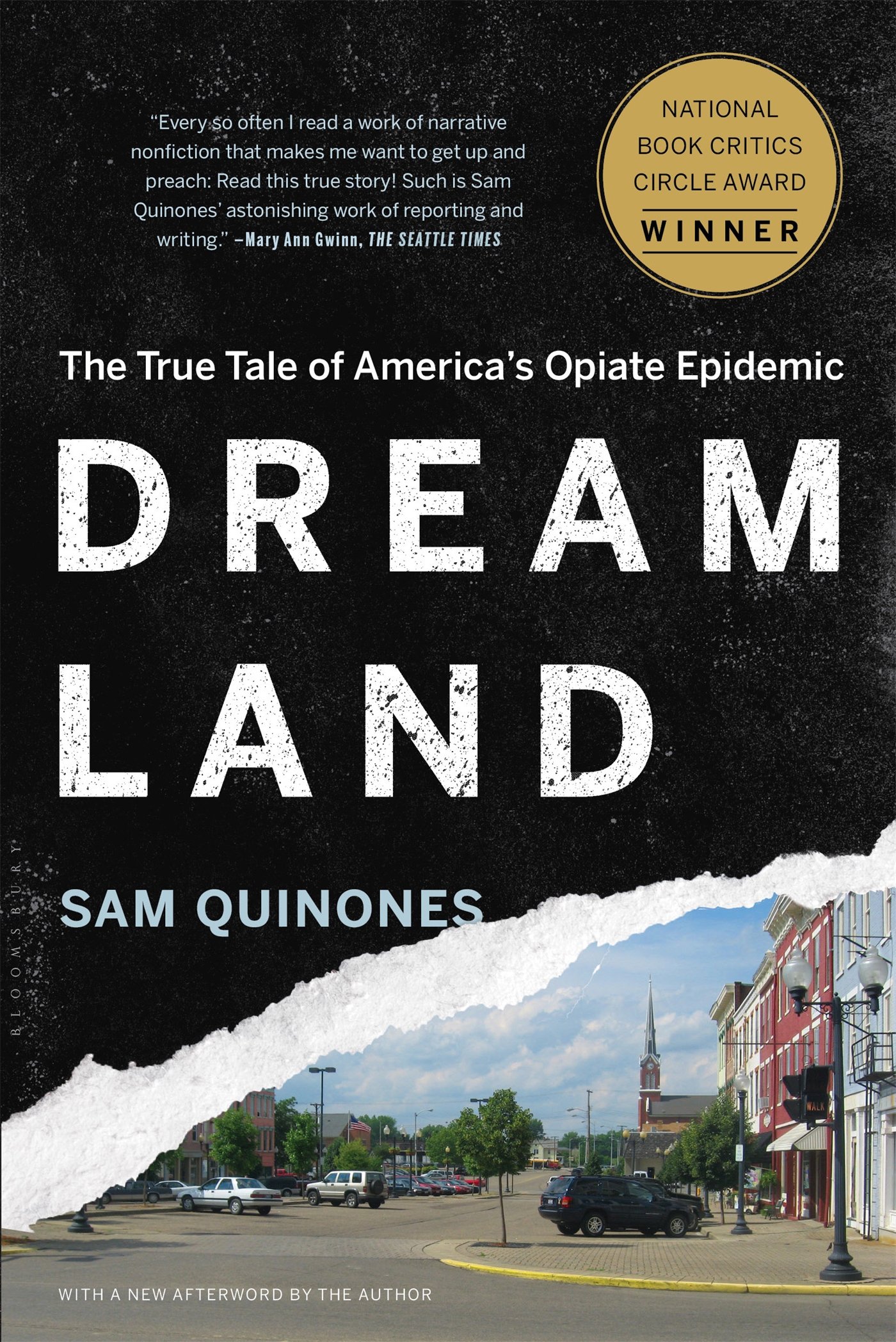Sam Quinones is an American author and journalist who writes narrative non-fiction. His two most recent books Dreamland: The True Tale of America’s Opiate Epidemic (2015) and The Least of Us: True Tales of America and Hope in the Time of Fentanyl and Meth (2021) are both critically acclaimed.

In this episode, Russ Roberts welcomes Quinones for a discussion of Dreamland, which provides a pluralistic view on the key players and the underlying pressures which caused the disaster.
Consider the motivations of the young men from Xalisco who are coming to America to sell opioids. Quinones shares the standard set by those who come back after selling drugs successful and build ostentatious homes. There is a great amount of social pressure, which Quinones likens to building a home in either 9 years or 9 months for the men from Mexico.
How can the pressure of coming home wealthy build a man to become “addicted” to it? How does the young men’s addiction to wealth compare to those addicted to the opioids they sell?
Quinones points to the close-knit nature of the drug ring in terms of similar “family” names and everybody knowing each other in the late 1990’s as something which made the sellers vulnerable to the DEA. Police also learned of the areas where people would meet to make their exchanges. Responding to the issues, new families became involved, and the sellers produced a pizza delivery type system where their customers would call and have a driver come to bring them the pills.
What advantages do a loyal labor structure have for illegal businesses, with its executors being related? To what extent do you think the demand for opioids suffered from police officers locating the areas of exchange? What could be a new concern for sellers with the pizza delivery-type system put in motion for the opioid-money exchange?
The rise of opioids began with their success in treating pain in patients. The medicine was pushed hard when pain specialists built the narrative that the opioids were non-addictive, and the drugs were marketed heavily by big pharmacy organizations like Purdue Pharma.
What should be the role of opioids in treating pain today? How did the sentiment of qualifying pain as a fifth vital sign in medicine complicate the opioid epidemic?
Roberts and Quinones discuss the perfect storm of causation leading to people receiving and becoming addicted to opioids. For example, the new supply of opioids met a great amount of demand from patients looking for an easy fix to solve their pain issues. Doctors were pressured into prescribing the pills because of the immense supply of pills and their role as a middle ground for the vast number of people trying to get Medicaid.
How did the incentives line up for doctors, pharmaceutical companies, and users to further the opioid epidemic? How have doctors seen a blowback of liability problems due to their patients’ addiction to opioids?
Quinones argues that Medicaid encourages people to become opioid sellers because they could receive the prescription drugs for extremely cheap and sell them on the street for a huge profit. Roberts ties the issue of American taxpayers covering the lion’s share cost of pills for Medicaid eligible users as a huge problem. Quinones and Roberts also share that many of those people who wanted to sell ended up using the drugs before they could even sell them because of their addiction weighing them down.
What are your feelings on Medicaid and the issues it caused during the height of the opioid epidemic? Who is most responsible for the opioid epidemic?
[Editor’s Note: This Extra was originally published on July 12, 2023.]
Brennan Beausir is a student at Wabash College studying Philosophy, Politics, and Economics and is a 2023 Summer Scholar at Liberty Fund.


READER COMMENTS
steve
Jul 14 2023 at 4:02pm
As a practitioner who lived through those days i would not a couple of things. The pain as a 5th vital sign was actual driven by the big pharma companies who had docs on their payrolls who played a part in pushing that idea. In practice pain as a 5th vital sign was not popular and did not last very long. What really seemed to matter was the belief that the newer narcotics were not addictive or very low risk for addiction. That made them very popular to subscribe. The drug companies sent out huge numbers of very attractive sales reps who passed out very convincing literature. There was certainly never a push to prescribe the drugs because there was a big supply or people trying to get on to Medicaid? Seriously, how would that even work?
Not convinced Medicaid was a huge factor. You can sell a prescription or drugs regardless of the insurer. If you have Medicare C , Medicare Advantage or private insurance with a drug plan you are probably paying almost nothing for drugs.
Steve
Brennan Beausir
Jul 17 2023 at 9:33am
Hi Steve, thanks for your comment!
Thanks for sharing your experience, and I agree with your points on the pharmaceutical companies pushing the drug, and the drugs’ addictive nature being downplayed or misunderstood.
Regarding Medicaid, Quinones talks about ‘ground zero’ areas where the opioid crisis began, and those being places where doctors were used to prescribing lots of drugs as the middle ground for worker’s compensation. As opiates were introduced in these areas, people whose doctors signed off on their disability had a Medicaid insurance card. Quinones and Roberts discuss the price of a month’s supply of pills like oxycontin, and Roberts demonstrates the issue Medicaid causes: “A month. Let’s say $1000. But you don’t have $1000. You do have a Medicaid card. And the co-pay for Medicaid is $3. Which seems like a very nice, thoughtful thing. But what it means is that the taxpayer is going to cover $997 of this. The addict is going to cover $3” (Roberts). When people are addicted or become addicted, this creates a huge problem with both users and sellers. With the lure of disability as an opportunity for a Medicaid insurance card–and what it offered–access to a large supply of cheap drugs that can be used or sold on the street for profit, demand increased. Along with this demand, doctors and pharmaceutical companies stood to benefit in both time and money with what Quinones argues was an easy action of prescribing the drugs.
“The pill revolution transformed the calculus of why you would want SSI or SSDI or what have you, because it gave you, as you said, the Medicaid Insurance Card. And all of a sudden, if you could find a doctor to prescribe you a long list of drugs–Vicodin, Oxycontin, Xanax, etc., etc.–it went on and on–that you could make a ton of money and get high a month[?], too. And yes. It was–the taxpayer money was kind of funding this in certain areas, among certain people. It was a big way that it began to spread early on” (Quinones).
Quoted Audio Transcriptions from (48:00-55:00) Podcast:
https://www.econtalk.org/sam-quinones-on-heroin-the-opioid-epidemic-and-dreamland/
Comments are closed.